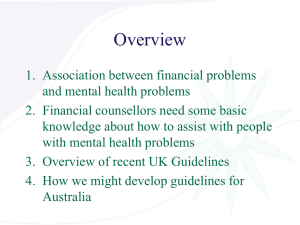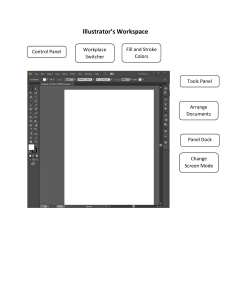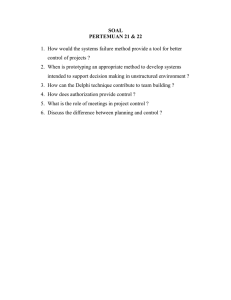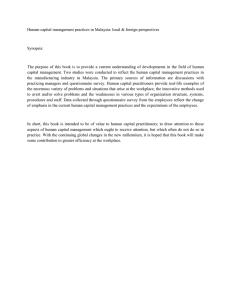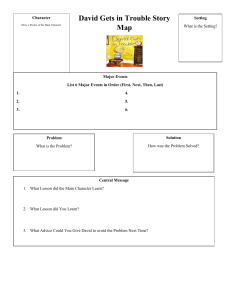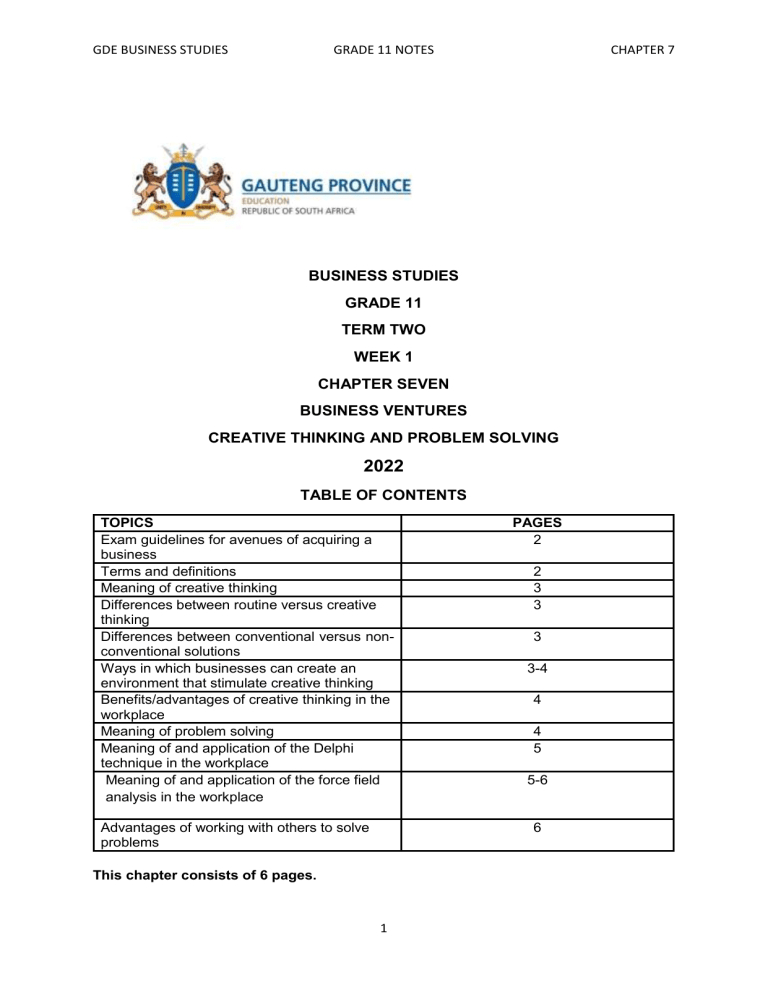
GDE BUSINESS STUDIES GRADE 11 NOTES CHAPTER 7 BUSINESS STUDIES GRADE 11 TERM TWO WEEK 1 CHAPTER SEVEN BUSINESS VENTURES CREATIVE THINKING AND PROBLEM SOLVING 2022 TABLE OF CONTENTS TOPICS Exam guidelines for avenues of acquiring a business Terms and definitions Meaning of creative thinking Differences between routine versus creative thinking Differences between conventional versus nonconventional solutions Ways in which businesses can create an environment that stimulate creative thinking Benefits/advantages of creative thinking in the workplace Meaning of problem solving Meaning of and application of the Delphi technique in the workplace Meaning of and application of the force field analysis in the workplace Advantages of working with others to solve problems PAGES 2 2 3 3 3 3-4 4 4 5 5-6 6 This chapter consists of 6 pages. 1 GDE BUSINESS STUDIES GRADE 11 NOTES CHAPTER 7 CONTENT DETAILS FOR TEACHING, LEARNING AND ASSESSMENT PURPOSES AVENUES OF ACQUIRING A BUSINESS Learners must be able to: ● Explain/Elaborate on the meaning of creative thinking. ● Differentiate between routine versus creative thinking. ● Differentiate/Distinguish between conventional versus non-conventional solutions. ● Recommend ways in which businesses can create an environment that stimulate creative thinking.(Recap ● Explain the benefits/advantages of creative thinking in the workplace. ● Define/Elaborate on the meaning of problem solving ● Explain the meaning of a Delphi and Force-Field analysis. (Recap) ● Apply a Delphi and Force-Field analysis from given scenarios/case studies. ● Explain the advantage of working with others to solve problems. ● Interview a business and find out about the following aspects: o What are the business problems o Create solutions to solve the problems. o Assess the solutions against the reality of the business. TERMS AND DEFINITIONS TERM Delphi technique Force-field analysis Problem solving Business problems Creativity Competitive Innovation Change Questionnaires PDCA process/cycle DEFINITION A complex problem-solving technique that tries to get a group of people to agree on how to solve a complex problem. A problem-solving method that looks at two opposing forces that support a problem being solved or a situation changing. The process of finding solutions to difficult or complex issues. These are current or long-term challenges and issues faced by the business. It is an act of turning new ideas into reality. Means as good as or better than others of a comparable nature. Introducing new and original ideas or methods. Make or become different. It is a research instrument consisting of a series of questions for the purpose of gathering information from respondents. Plan-Do-Check- Act, this model is used to solve complex business problems This chapter consists of 6 pages 1 Meaning of creative thinking ● Creative thinking refers to thinking differently and looking at something in a new way. 2 GDE BUSINESS STUDIES GRADE 11 NOTES CHAPTER 7 ● Creative thinking is about approaching a thought/idea/problem/situation in a new and interesting way. ● It is a process of putting facts/concepts/principles together in new and original ways. ● Businesses need to solve their problems efficiently to find creative solutions to problems. 2 Differences between routine versus creative thinking ROUTINE THINKING ● It refers to ordinary/ every day/conventional thinking ● It is suitable for work that requires logic, consistency and attention to detail. ● ● ● It does not lead to new ideas or pattern of thought. ● Requires businesses to apply old thinking patterns to new situations. ● ● CREATIVE THINKING It refers to looking at an opportunity/ problem in a new and different way. It is invaluable in keeping the business innovative and relevant in a changing market and to solve new problems. It leads to an idea that is original compared to existing ideas. Requires businesses to apply new ways of thinking to old situations. 3 Differences between conventional versus non-conventional solutions CONVENTIONAL SOLUTIONS ● Ordinary and unimaginative solutions ● They are solutions obtained through logical, analytical problem-solving methods. ● There is often one solution to a problem ● ● ● NON-CONVENTIONAL SOLUTIONS ● Different and creative solutions ● They are solutions that are obtained from creative thinking. ● There is often more than one solution to a problem ● Changes and looks for what is different ● Does not mind chance interruptions ● Explores the least likely directions Chooses and looks for what is right Concentrates on relevance Moves in the most likely directions 4 Ways in which businesses can create an environment that stimulate creative thinking ● Businesses must emphasise the importance of creative thinking to ensure that all staff know that their ideas will be heard. ● Encourage staff to come up with new ideas/opinions/solutions. ● Encourage job swops within the organisation/studying how other businesses are doing things. ● Encourage alternative ways of working/doing things. ● Respond enthusiastically to all ideas and never let anyone feel less important. ● Reward creativity with reward schemes for teams/individuals that come up with creative ideas. ● Provide a working environment conducive to creativity, free from distractions. ● Make time for brainstorming sessions to generate new ideas, e.g. regular workshops/generate more ideas/build on one another's ideas. 3 GDE BUSINESS STUDIES GRADE 11 NOTES CHAPTER 7 ● Place suggestion boxes around the workplace and keep communication channels open for new ideas. ● Train staff in innovative techniques/creative problem-solving skills/mindmapping/lateral thinking. 5 Benefits/Advantages of creative thinking in the workplace ● ● ● ● ● ● ● ● ● ● ● Complex business problems may be solved. Creativity may lead to new inventions which improves the general standard of living. Better/Unique/Unconventional ideas/solutions are generated. May give businesses a competitive advantage if unusual/unique solutions/ ideas/strategies are implemented. Managers/employees have more confidence as they can live up to their full potential. Managers will be better leaders as they will be able to handle/manage change(s) positively and creatively. Managers/Employees can develop a completely new outlook, which may be applied to any task(s) they may do. Leads to more positive attitudes as managers/employees feel that they have contributed towards problem solving/Improves motivation amongst staff members Managers/Employees have a feeling of great accomplishment and they will not resist/obstruct once they solved a problem/contributed towards the success of the business. Management/Employees can keep up with fast changing technology. Stimulates brain function of employees/managers, as they are continuously pushed out of their comfort zone/improving the total well-being of employees. 6 Meaning of problem solving ● ● ● ● ● It is a clear process to follow whenever a problem needs to be solved. A process of finding the correct strategy to respond to a problem. Problem solving involves analytical and creative skills. Some businesses use the PDCA process/cycle to solve a problem. PDCA stand for Plan-Do-Check-Act. 4 GDE BUSINESS STUDIES 7 7.1 GRADE 11 NOTES CHAPTER 7 The Delphi technique and Force-Field analysis Meaning of the Delphi Technique ● It is a technique that is used to solve new and complex problems. ● The Delphi technique is a popular method of gathering information by using a selected expert’s panel on a specific topic. ● The group of specialists/expert’s panel never meet face to face. ● This technique uses a series of questionnaire to obtain feedback from experts. ● The questionnaires are used to bring about agreement from different views. 7.2 Ways in which businesses can apply the Delphi Technique in the workplace ● Businesses must invite a panel of experts to research the complaints from customers. ● Experts do not have to be in one place and will be contacted individually. ● Design a questionnaire consisting of questions on how to improve the quality of their tiles and distribute it to the panel members/experts. ● Request the panel to individually respond to the questionnaire/suggest improvements to the products and return it to businesses. ● Summarise the responses from the experts in a feedback report. ● Send the feedback report and a second set of questions/questionnaire based on the feedback report to the panel members. ● Request panel members to provide further input/ideas on how to improve the quality of their tiles after they have studied the results/documentation. ● Distribute a third questionnaire based on previous feedback from the second round. ● Prepare a final summary/feedback report with all the methods to improve the quality of products. ● Choose the best solution/proposal after reaching consensus. 7.3 Meaning of force field analysis ● Force filed analysis is a method of listing, discussing and analysing the various forces for/advantages and against/disadvantages of a proposed change. ● It is often used for planning and implementing change in a business. ● The analysis involves identifying the advantages and disadvantages of a decision. ● This tool is especially useful to overcome resistance to change. 7.4 Ways in which businesses can apply the force field analysis ● ● ● ● ● ● Describe the current situation/problem and the desired situation. Identify what is going to happen if there is no action taken. List all driving/pros and restraining/cons forces that will support and resist change. Discuss the key restraining forces and determine their strengths. Discuss the key driving forces and determine their strengths. Allocate a score to each force using a numerical scale, where 1 is weak and 5 is strong. ● Weigh up the positives and negatives then decide if the project is viable. ● Analyse the restraining forces and best way of advancing them. 5 GDE BUSINESS STUDIES ● ● ● ● 8 GRADE 11 NOTES CHAPTER 7 Explore the driving forces and the best way of advancing them Choose the force with the highest score as the solution. If the project is viable, find ways to increase the forces for change. Identify priorities and develop an action plan. Advantages of working with others to solve problems ● The problem can be solved faster and easier. ● Workload decreases if everyone does their share. ● More ideas can be generated increasing the chances of finding the best possible solutions. ● Exposure to other people’s thinking patterns and to the way other people approach problems. ● Enables team members to learn from others and accept their points of views. ● Greater results can be achieved. ● Team members have access to a broader bases of knowledge, skills and expertise. ● The problem is viewed from different perspectives. ● There is access to a broad base of knowledge, skills and expertise. ● Problems are analysed in greater detail which lead to better understanding of the problem. ● Promotes creative thinking and idea generation by thinking of as many ideas as possible to solve problems. 6
